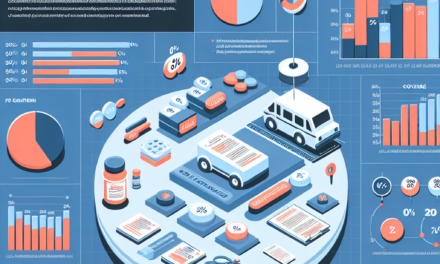Trump Directs Agencies to Prepare for Significant Job Reductions
The announcement by former President Donald Trump directing federal agencies to prepare for significant job reductions has sent shockwaves through the political and economic landscape of the United States. This directive raises critical questions about the future of government employment, the implications for public services, and the broader economic impact on the nation. In this article, we will explore the context of this directive, its potential consequences, and the reactions it has elicited from various stakeholders.
Understanding the Context of Job Reductions
To fully grasp the implications of Trump’s directive, it is essential to understand the context in which it was made. The U.S. federal workforce has been a topic of debate for decades, with discussions often revolving around efficiency, budget constraints, and the role of government in society.
Historically, the size of the federal workforce has fluctuated based on political leadership and economic conditions. For instance, during the Obama administration, there was a concerted effort to reduce the size of government through attrition and hiring freezes. Conversely, the Trump administration initially focused on increasing military and border security personnel, which led to a temporary increase in federal employment.
However, as the Trump administration approached its final months, economic pressures intensified due to the COVID-19 pandemic. The federal government faced unprecedented challenges, including rising unemployment rates and a ballooning national debt. In this context, Trump’s directive can be seen as an attempt to streamline government operations and reduce expenditures.
The Mechanisms of Job Reductions
Trump’s directive to federal agencies to prepare for job reductions involves several mechanisms that could lead to significant changes in the federal workforce. Understanding these mechanisms is crucial for assessing the potential impact on employees and the services they provide.
- Hiring Freezes: One of the most immediate methods for reducing the size of the federal workforce is through hiring freezes. By halting new hires, agencies can gradually reduce their workforce as employees retire or leave for other opportunities.
- Voluntary Separation Incentives: Agencies may offer incentives for employees to voluntarily leave their positions. This approach can help reduce the workforce without resorting to layoffs, which can be politically and socially contentious.
- Layoffs: In more extreme cases, agencies may resort to layoffs, which can have significant implications for employee morale and public services. Layoffs can also lead to legal challenges and public backlash.
- Restructuring Agencies: Agencies may undergo restructuring to eliminate redundant positions and streamline operations. This can involve consolidating departments or redefining job roles.
- Outsourcing Services: Another strategy may involve outsourcing certain government functions to private contractors. This approach can lead to job losses within the federal workforce but may be justified by claims of increased efficiency and cost savings.
Each of these mechanisms carries its own set of challenges and implications. For instance, while hiring freezes may seem like a straightforward solution, they can lead to understaffing and increased workloads for existing employees. Similarly, voluntary separation incentives may not attract enough participants to achieve the desired reductions.
Impact on Public Services
The potential job reductions in federal agencies raise significant concerns about the impact on public services. Federal employees play a crucial role in delivering essential services to citizens, and any reduction in workforce could lead to diminished service quality and accessibility.
- Healthcare Services: Agencies like the Department of Health and Human Services (HHS) are responsible for administering critical healthcare programs. Job reductions could hinder the government’s ability to respond effectively to public health crises, as seen during the COVID-19 pandemic.
- Environmental Protection: The Environmental Protection Agency (EPA) relies on a skilled workforce to enforce regulations and protect natural resources. Reductions in staff could weaken enforcement efforts and lead to increased environmental degradation.
- Social Services: Agencies that provide social services, such as the Department of Housing and Urban Development (HUD), may struggle to meet the needs of vulnerable populations if staffing levels are reduced.
- National Security: The Department of Homeland Security (DHS) and other agencies responsible for national security may face challenges in maintaining effective operations with a reduced workforce, potentially compromising public safety.
- Economic Recovery: As the nation seeks to recover from the economic fallout of the pandemic, federal agencies play a vital role in implementing stimulus programs and supporting economic growth. Job reductions could impede these efforts.
The impact on public services is not merely theoretical; it has real-world implications for millions of Americans who rely on government programs and services. As agencies grapple with reduced staffing levels, the quality and accessibility of these services may decline, leading to increased frustration and hardship for citizens.
Reactions from Stakeholders
The announcement of significant job reductions has elicited a wide range of reactions from various stakeholders, including government employees, labor unions, advocacy groups, and political leaders. Understanding these reactions provides insight into the broader implications of Trump’s directive.
- Federal Employees: Many federal employees expressed concern and anxiety over the potential job losses. The prospect of layoffs and reduced job security can lead to decreased morale and productivity among remaining staff.
- Labor Unions: Labor unions representing federal employees have been vocal in their opposition to job reductions. They argue that such cuts undermine the quality of public services and threaten the livelihoods of dedicated workers.
- Advocacy Groups: Advocacy organizations focused on social justice, healthcare, and environmental protection have raised alarms about the potential consequences of job reductions. They argue that a smaller workforce could exacerbate existing inequalities and hinder progress on critical issues.
- Political Leaders: Reactions from political leaders have varied widely. Some Republican leaders have supported the directive as a necessary step toward fiscal responsibility, while Democrats have criticized it as a reckless move that could harm essential services.
- The Public: Public opinion on job reductions is mixed. While some citizens may support efforts to reduce government spending, others are concerned about the potential impact on services they rely on.
The diverse reactions highlight the complexity of the issue and the need for careful consideration of the potential consequences of job reductions. As stakeholders voice their concerns, it becomes clear that any changes to the federal workforce will have far-reaching implications for society as a whole.
Long-Term Economic Implications
The long-term economic implications of significant job reductions in federal agencies are profound and multifaceted. Understanding these implications is crucial for assessing the overall impact on the U.S. economy and its recovery from the pandemic.
- Unemployment Rates: Job reductions in federal agencies could contribute to rising unemployment rates, particularly in regions heavily reliant on government employment. This could exacerbate economic challenges and slow recovery efforts.
- Consumer Spending: Federal employees contribute to consumer spending, which is a critical driver of economic growth. Job losses could lead to decreased spending, further impacting local economies.
- Tax Revenue: A reduction in the federal workforce could lead to decreased tax revenue, as fewer employees mean lower income tax contributions. This could strain government budgets and limit funding for essential services.
- Public Investment: Job reductions may hinder the government’s ability to invest in infrastructure, education, and other critical areas that drive long-term economic growth. This could have lasting effects on the nation’s competitiveness.
- Social Safety Nets: As job reductions impact public services, vulnerable populations may face increased hardships. This could lead to greater reliance on social safety nets, placing additional strain on government resources.
The long-term economic implications of job reductions are complex and interconnected. As the nation navigates the challenges of recovery, it is essential to consider how changes to the federal workforce will shape the economic landscape in the years to come.
Conclusion: Navigating the Future of Federal Employment
Trump’s directive to prepare for significant job reductions in federal agencies represents a pivotal moment in the ongoing debate over the role of government in society. As we have explored, the implications of this directive are far-reaching, affecting not only federal employees but also the quality of public services and the broader economy.
As stakeholders continue to voice their concerns and advocate for their positions, it is crucial for policymakers to carefully consider the potential consequences of job reductions. Balancing the need for fiscal responsibility with the imperative to provide essential services will require thoughtful deliberation and collaboration among all parties involved.
Ultimately, the future of federal employment will depend on the choices made in the coming months and years. As the nation seeks to recover from the challenges posed by the pandemic, it is essential to prioritize the well-being of both employees and the citizens they serve. The path forward will require a commitment to finding solutions that promote efficiency while safeguarding the vital services that underpin our society.




